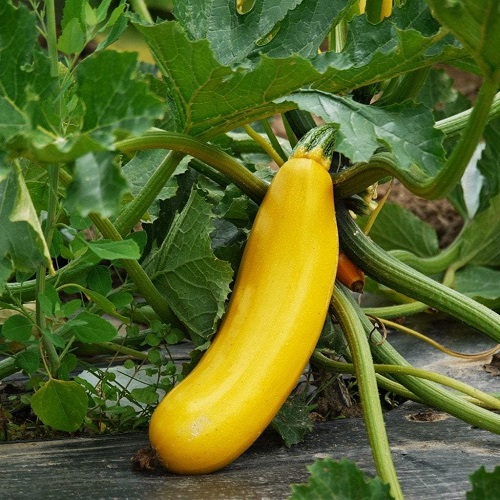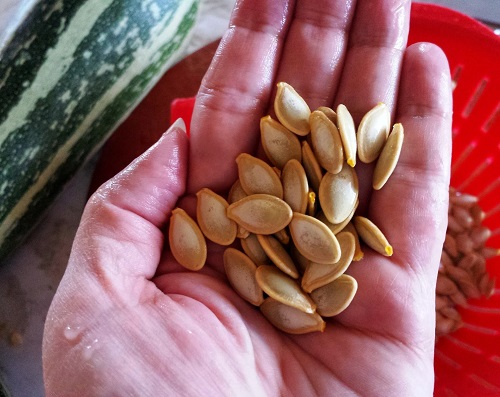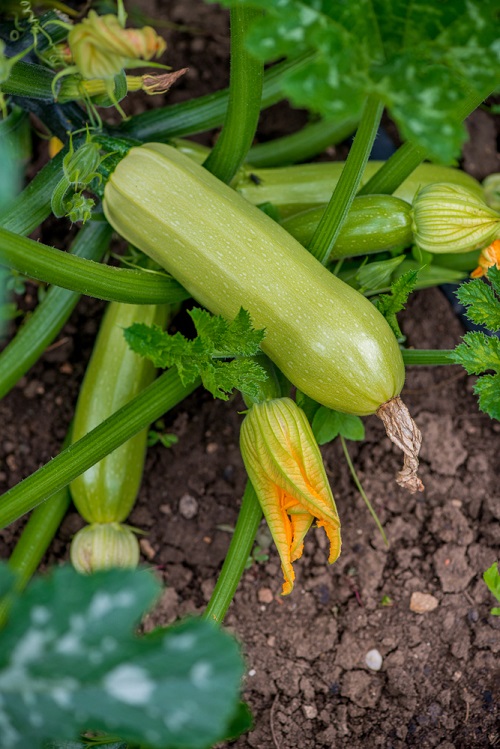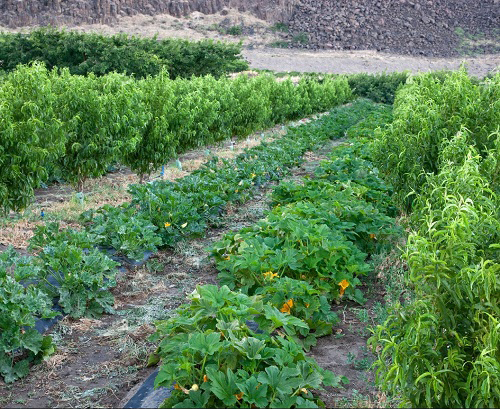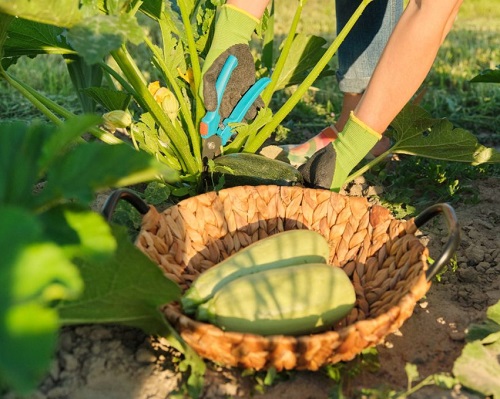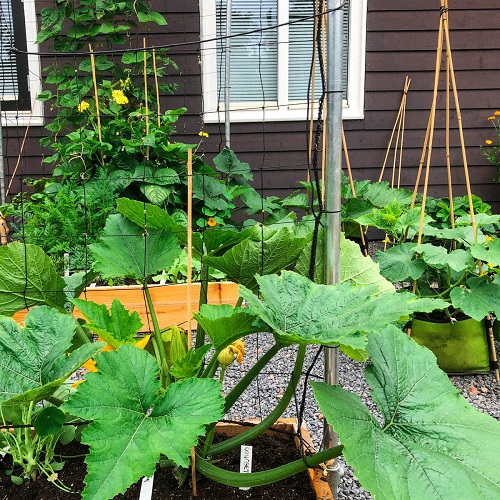Apply these Home Based Tricks and Tips for Tastiest Zucchini Harvest Ever! We have the best tips for you!
Here are the best Home Based Tricks and Tips for Tastiest Zucchini Harvest Ever. From selecting quality seeds to maximizing sunlight exposure and implementing companion planting, these tips will elevate your zucchini harvest to new heights of taste and satisfaction.
Here is How to Grow Big Basil Plant Like a Shrub for Unlimited Harvest
Apply these Home Based Tricks and Tips for Tastiest Zucchini Harvest Ever
1. Start with Quality Seeds
The foundation of a successful zucchini harvest begins with selecting high-quality seeds. Opt for reputable seed suppliers that offer a wide variety of zucchini cultivars. Look for seeds that are fresh, disease-resistant, and suitable for your climate.
Here are the best zucchini varieties you can go for:
- ‘Black Beauty’: One of the most popular zucchini varieties, ‘Black Beauty’ produces glossy dark green fruits with a firm texture. It has a delicious flavor and is known for its high productivity.
- ‘Costata Romanesco’: Also known as Romanesco zucchini, this variety has distinctive ribbed skin and a nutty flavor. It is prized for its excellent taste and tender texture. ‘Costata Romanesco’ is a favorite among gardeners and chefs alike.
- ‘Golden Dawn’: This variety stands out with its bright yellow skin. ‘Golden Dawn’ zucchinis have a mild, sweet flavor and tender flesh. They add vibrant color to dishes and are visually appealing.
- ‘Ronde de Nice’: This French heirloom variety is unique for its round shape. ‘Ronde de Nice’ zucchinis have a delicate flavor and a tender texture. They are often used in stuffed zucchini recipes due to their convenient size and shape.
- ‘Greyzini’: A relatively new variety, ‘Greyzini’ zucchinis have pale gray-green skin and creamy white flesh. They offer a slightly sweeter taste compared to traditional green zucchini.
Here are 12 Simple Seed Germination Tips To Grow Every Seed
2. Sunlight is Your Friend
Zucchinis are sun-loving plants that thrive in full sunlight. Adequate exposure to sunlight is crucial for their growth and overall productivity. Here’s some more information on the one of the important Home Based Tricks and Tips for Tastiest Zucchini.
- Container Gardening: Place the containers in the sunniest spots of your yard, balcony, or patio. Zucchinis require a minimum of 5-6 hours of direct sunlight, so position the containers where they receive maximum sunlight exposure throughout the day. If you have a bush type, make sure that you place it at least 2 feet away from a wall.
Note: If you have limited sun exposure, consider container gardening and place the containers in the sunniest spots of your yard or patio. Keep in mind that zucchinis are heat-loving plants, so the more sun they receive, the better they will grow.
Here is How to Grow Zucchini in a Pot Successfully
- Outdoor Planting: When planting zucchinis outdoors, select a garden plot that receives a minimum of 6-8 hours of direct sunlight daily. Zucchinis require ample sunlight to thrive and produce abundant yields.
Zucchini Tip: While zucchinis love sunlight, excessive heat can sometimes stress the plants and affect their flavor. To protect your zucchinis during scorching summer days, provide temporary shade using shade cloth or lightweight row covers. This will help regulate the temperature and prevent the plants from becoming heat-stressed, resulting in zucchinis with better flavor and texture.
Note: If you are growing it in a warm climate, then make sure to save the plant from the harsh afternoon sun. Ensure it gets shade in the hottest parts of the day.
3. Pay Attention to the Spacing
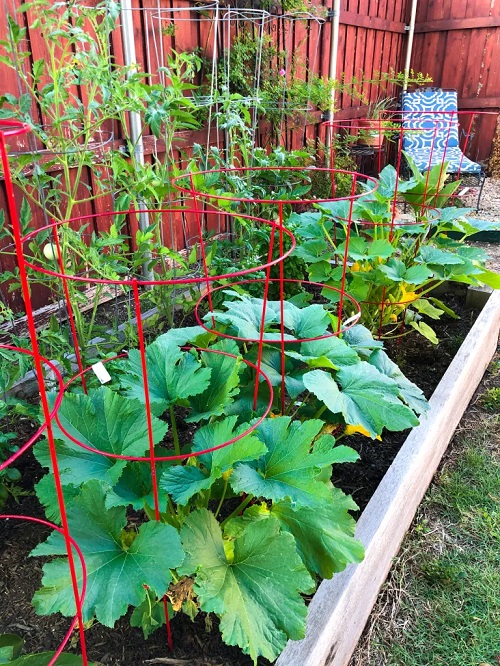
Zucchinis are notorious for their sprawling growth habit. To ensure their development, it is essential to provide sufficient spacing between plants.
Aim for spacing of 2-3 feet between each zucchini plant, taking into consideration the specific variety you are growing. By allowing enough room for the plants to spread their leaves without crowding each other, you promote proper air circulation.
Furthermore, appropriate spacing allows sunlight to reach all parts of the plant, including the lower leaves and fruit. Sunlight exposure promotes photosynthesis and even growth, leading to robust plants and better fruit development.
4. Nutrient-Rich Soil for Tastiest Zucchini Harvest Ever
If your zucchini grows in suitable soil, it will be full of amazing flavors and a delightful crunch. Prior to planting, it is crucial to prepare the soil by incorporating organic matter such as compost or well-rotted manure.
This process significantly enhances soil fertility, drainage, and moisture retention, providing an ideal environment for zucchini plants to thrive.
Follow this recipe to create the best soil for zucchini plants.
Ingredients
- 1 part compost
- 1 part well-rotted manure
- 1 part peat moss or coconut coir
- Organic slow-release fertilizer
Steps
- Combine equal parts compost, well-rotted manure, and peat moss/coconut coir.
- Add the slow-release organic fertilizer to the soil mix.
- Prepare the garden bed, removing debris and weeds.
- Plant zucchini seeds or seedlings in the amended soil. Make sure that the zucchini plants are planted 2-3 feet apart.
Here are the best recipes to make the perfect growing medium for your plants
5. Go With Companion Planting
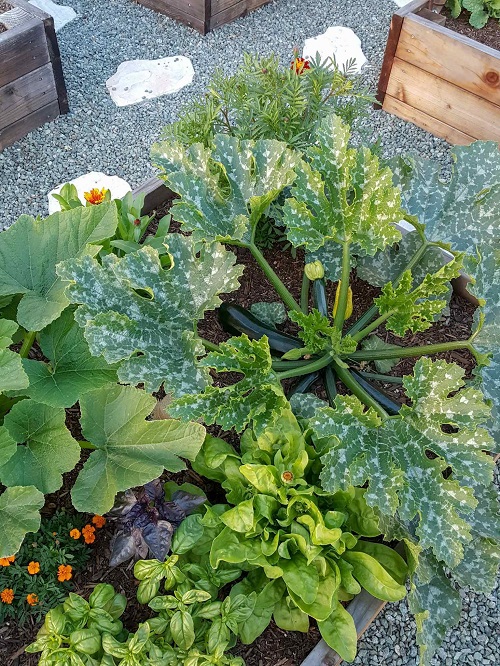
Companion planting can greatly benefit zucchini plants by deterring pests, improving pollination, and enhancing plant health. Consider planting companion plants such as marigolds, nasturtiums, or basil around your zucchinis.
These plants not only add visual interest but also help repel common pests and attract beneficial insects like bees for better pollination.
- Marigolds emit a scent that repels insects like aphids and nematodes. Nasturtiums act as a trap crop, attracting pests away from zucchinis while enhancing soil fertility.
- Basil, with its aromatic leaves, not only repels pests but also enhances the flavor of nearby plants, including zucchinis.
By strategically incorporating these companion plants, you can create a harmonious garden ecosystem that supports healthy zucchini growth and reduces the need for chemical interventions.
With no use of harmful chemicals, your zucchinis will grow healthy in a natural way for the tastiest zucchini harvest ever.
Here are the best zucchini Companion Plants
6. Practice Intercropping with Aromatic Herbs
Intercropping zucchinis with aromatic herbs is a beneficial practice that goes beyond adding diversity to your garden. Not only do these herbs contribute to the aesthetics of your garden, but they also enhance the flavor of zucchinis in a remarkable way.
- Herbs such as thyme, oregano, and rosemary are known for their aromatic properties. They release volatile oils that can enhance the taste of nearby vegetables, including zucchini.
- When you plant these herbs around your zucchini plants, their delightful fragrances permeate the air and subtly infuse the zucchini with exquisite flavors during their growth.
- As the zucchinis absorb these aromatic compounds, they develop a nuanced taste profile that is both distinct and pleasing to the palate.
Moreover, intercropping aromatic herbs with zucchinis not only benefits the zucchinis themselves but also provides you with an abundant supply of culinary herbs.
As you harvest your zucchinis, you can pluck sprigs of fresh thyme, oregano, or rosemary to elevate your culinary creations.
Learn How to Grow Zucchini Vertically to Save Space and Unlimited Harvest
7. Effective Watering for Tastiest Zucchini Harvest Ever
Watering zucchinis correctly is crucial for their health and flavor. Consistent moisture throughout the growing season is essential, but it’s equally important to avoid overwatering, which can lead to root rot and other fungal diseases. Here are some tips for proper watering:
- Monitor the soil: Check the moisture levels by inserting your finger about an inch into the soil. Water only when the top inch feels dry. This helps prevent waterlogging and promotes healthy root growth.
- Deep watering: When it’s time to water, aim for deep, thorough watering rather than frequent shallow watering. This encourages the zucchini plant’s roots to grow deeper into the soil, making them more resilient to drought and resulting in healthier plants.
- Mulching for moisture retention: Mulching around the base of zucchini plants with organic materials like straw or wood chips helps retain soil moisture. The mulch acts as a protective layer, reducing water evaporation from the soil surface and preventing weed growth that could compete with the zucchinis for water and nutrients.
Here are the best ways to water plants
8. Pollinate with Your Hands
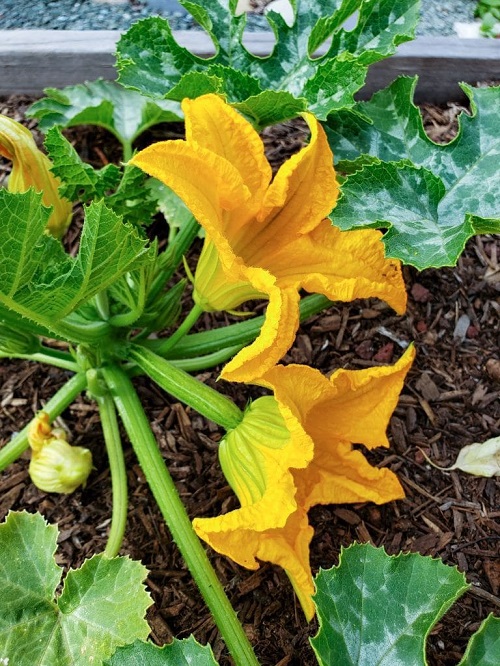
Zucchini plants produce both male and female flowers. To ensure a good and flavorful fruit set, gently transfer pollen from the male flowers to the female flowers using a small brush or cotton swab. This is especially helpful if you don’t have many pollinators in your area.
- To hand pollinate, gently transfer pollen from the stamen of a male flower to the stigma of a female flower using a small brush, cotton swab, or your finger.
- It’s best to do this in the morning when the flowers are open and repeat the process every 1-2 days for a higher chance of successful pollination.
While hand pollination can be one of the most effective home based tricks and tips for tastiest zucchini, attracting natural pollinators like bees and butterflies to your garden can also improve pollination.
Hand Pollination Tip: You can easily distinguish the male and female flowers. Male flowers can be identified by their long, thin stems, while female flowers have a small swelling at the base.
Invite these 10 Pollinators to Have the Most Productive Garden
9. Harvest at the Right Time
- Size: Harvest zucchini when they are small to medium-sized, typically around 6 to 8 inches (15 to 20 centimeters) in length. At this stage, the zucchini will be tender, flavorful, and have a good texture. Avoid letting them grow too large, as they can become woody and less tasty.
- Color and Texture: Look for zucchini with bright, glossy skin. The skin should be firm and easy to pierce with a fingernail. Avoid zucchini that are dull, discolored, or have rough, tough skin.
- Harvest Frequency: Regularly check your zucchini plants for mature fruits. Harvest them when they reach the desired size. Leaving zucchini on the plant for too long can inhibit further production and lead to oversized, less flavorful fruits.
Here is Zucchini in Different Languages + Where Did Zucchini Originate
Frequently Asked Questions
1. How Do I Know if Zucchini Seeds Are of Good Quality?
Look for reputable seed suppliers known for their quality products. Fresh seeds with high germination rates are desirable. Additionally, consider purchasing disease-resistant varieties suitable for your specific climate.
2. How Often Should I Water My Zucchini Plants?
Water zucchinis when the top inch of the soil feels dry. Avoid overwatering, as it can lead to root rot. Instead, aim for deep, thorough watering to encourage strong root growth. Mulching around the base of plants helps retain soil moisture.
Here are Signs of Overwatering & How to Save an Overwatered Plant
3. What Are Some Common Pests That Affect Zucchinis?
Common pests include aphids, squash bugs, and cucumber beetles. To control them naturally, consider companion planting with marigolds or nasturtiums, which repel these insects. Regularly inspect plants for signs of infestation and remove any affected leaves or pests by hand. Introduce beneficial insects like ladybugs or use organic pest control methods if necessary.
4. Can I Harvest Zucchini Flowers for Culinary Use?
Yes, zucchini flowers are edible and often used in various culinary preparations. Harvest the male flowers, as they don’t develop into fruits. Gently remove the flowers early in the morning when they are fully open, and use them fresh in recipes like stuffed zucchini flowers or as an edible garnish.

